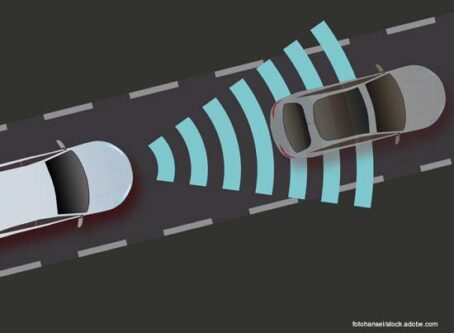AEB light vehicle rule approaches finish line
The White House Office of Management and Budget has completed the review of a final rule to mandate automatic emergency braking systems for light vehicles.
OMB’s approval on Monday, April 22 means that the National Highway Traffic Safety Administration’s final rule for light vehicle AEBs likely will be published in the coming days.
Now, the question for truckers is how far behind is a similar rule for heavy vehicles.
Background
Last June, NHTSA issued a notice of proposed rulemaking to require AEBs on new vehicles weighing less than 10,000 pounds. Soon after, NHTSA and the Federal Motor Carrier Safety Administration issued a joint proposal that would require AEB systems and electronic stability control systems on heavy vehicles weighing 10,001 pounds or more.
The light vehicle proposal, which is projected to save 360 lives each year and reduce annual injuries by 24,000, was sent to OMB for review in January. If the rule is adopted as proposed, nearly all new U.S. vehicles weighing less than 10,000 pounds will be required to have AEB technology three years after it is published in the Federal Register.
The heavy vehicle final rule still has not been sent to OMB. Although the U.S. Department of Transportation projected the rule to be published in April, it will likely be months before a review is completed. The initial joint proposal called for all Class 7 and 8 vehicles – those weighing more than 26,000 pounds – to be required to meet the AEB standards three years after the rule takes effect. All Class 3 to 6 vehicles –those weighing 10,001 pounds or more – would have four years.
Concerns involving AEB technology
Reports of false activations have surrounded AEBs for light and heavy vehicles.
The Associated Press recently reported about an investigation into unexpected automatic braking for nearly 3 million Hondas.
“The complaints allege that the automatic emergency braking system can brake the vehicles with nothing in their forward path, increasing the risk of a crash,” The Associated Press reported. “(NHTSA) said it has 47 reports of crashes and 112 reports of injuries from the problem.”
False activations also are a common complaint among truck drivers.
In the October 2023 issue of Land Line Magazine, truck driver Carrie Moore shared her near-crash story. Moore said she was driving on a snowy Michigan highway in 2022 when a guardrail along a curve triggered a false activation.
She added that the ill-timed braking incident caused her truck to jackknife on the icy road.
“It was a full application,” she said. “That sent the truck sideways. I barely kept it out of the median. The only thing that saved me was hearing the voices of my parents, who were both truck drivers. They taught me that the last thing you want to do in that situation is to hit the brakes. Instead, you tap the gas to get out of it.”
Although the advice helped her avoid crashing into the median, the incident scared Moore so much that she said she would quit the trucking industry before driving in another truck with AEB tech.
In addition to comments from drivers like Moore, NHTSA opened an investigation in May 2023 into false automatic braking on certain Freightliner trucks. There were 18 complaints of false AEB activation “without an actual roadway obstacle.” In some instances, the false activation brought the truck to a complete stop in the travel lane. The investigation remains active.
The Owner-Operator Independent Drivers Association opposes any attempts to mandate the technology until it is perfected.
“The notice of proposed rulemaking mandates AEB systems without sufficiently addressing false activations, properly consulting with professional truck drivers or completing ongoing research programs,” OOIDA wrote in comments signed by President Todd Spencer. LL









